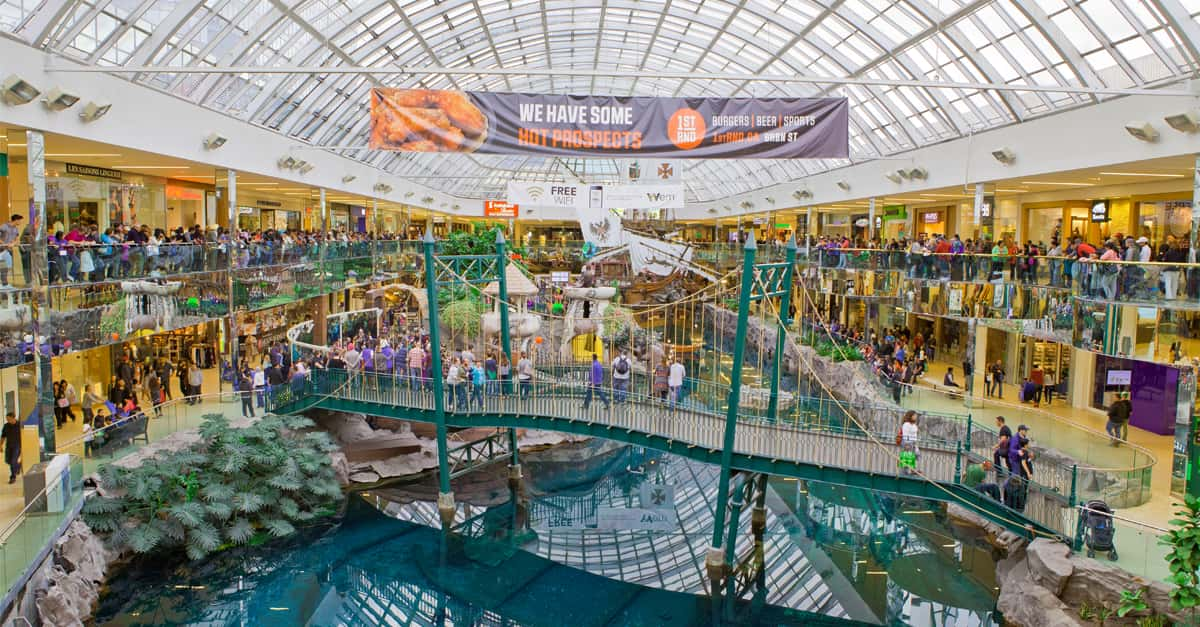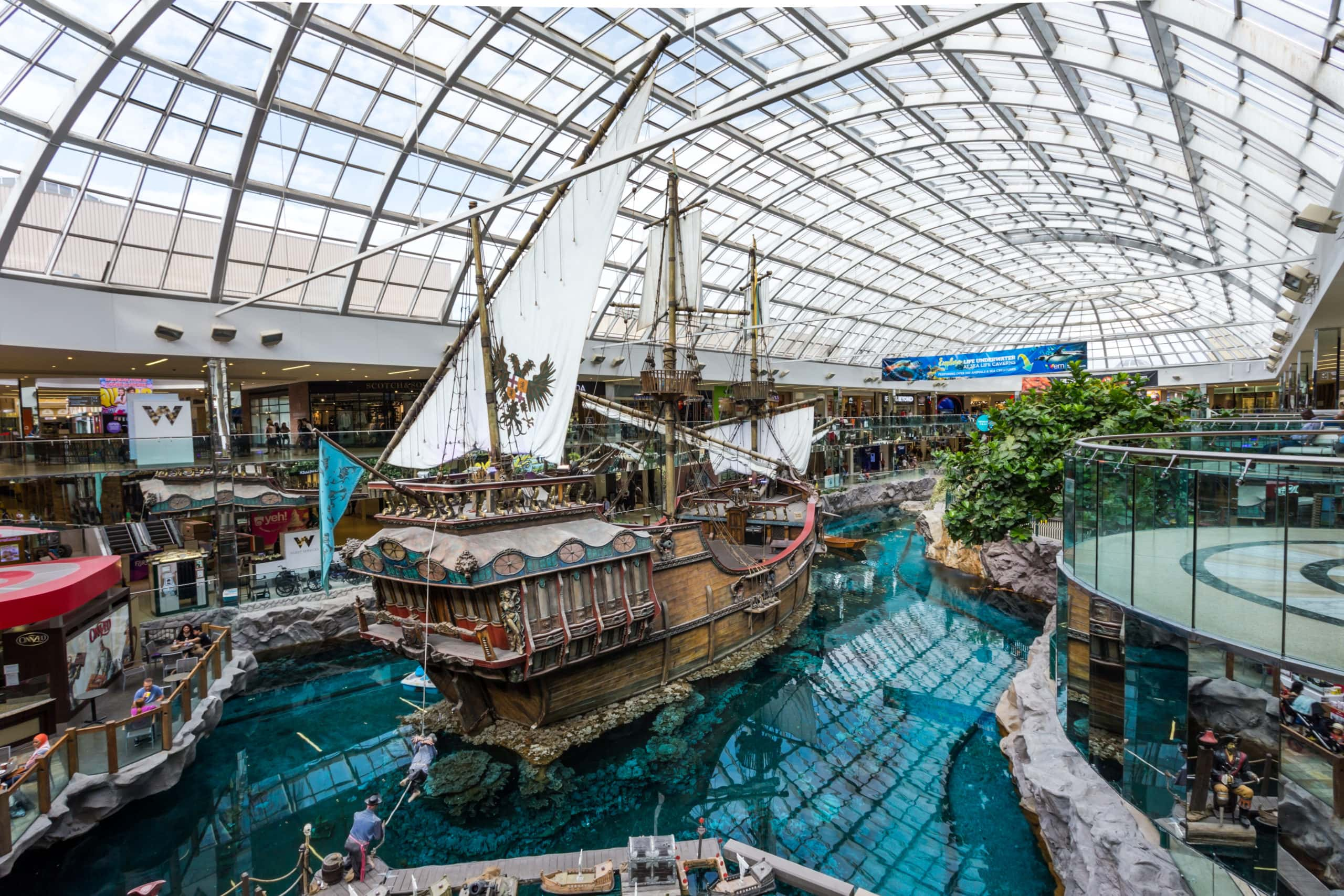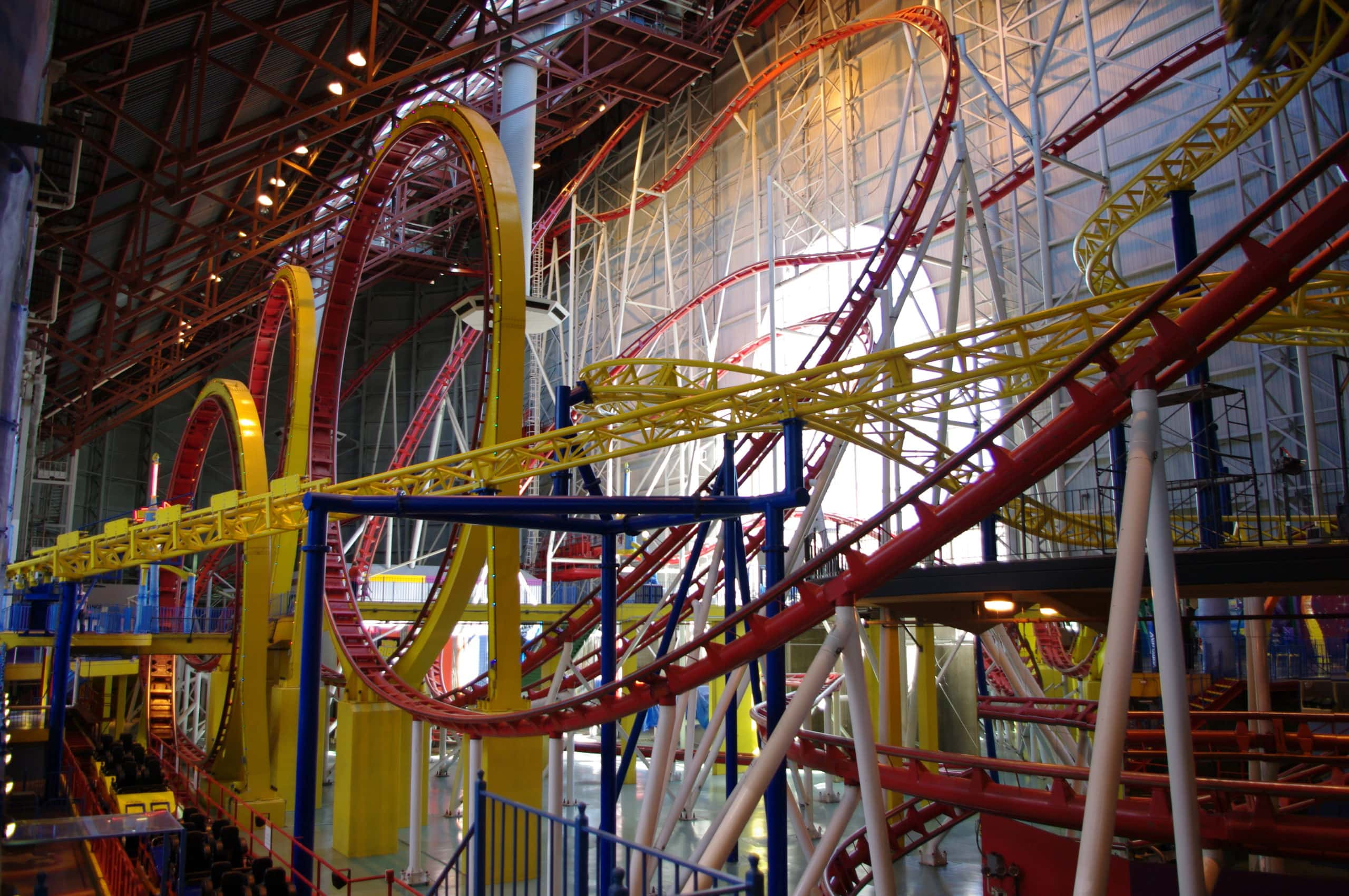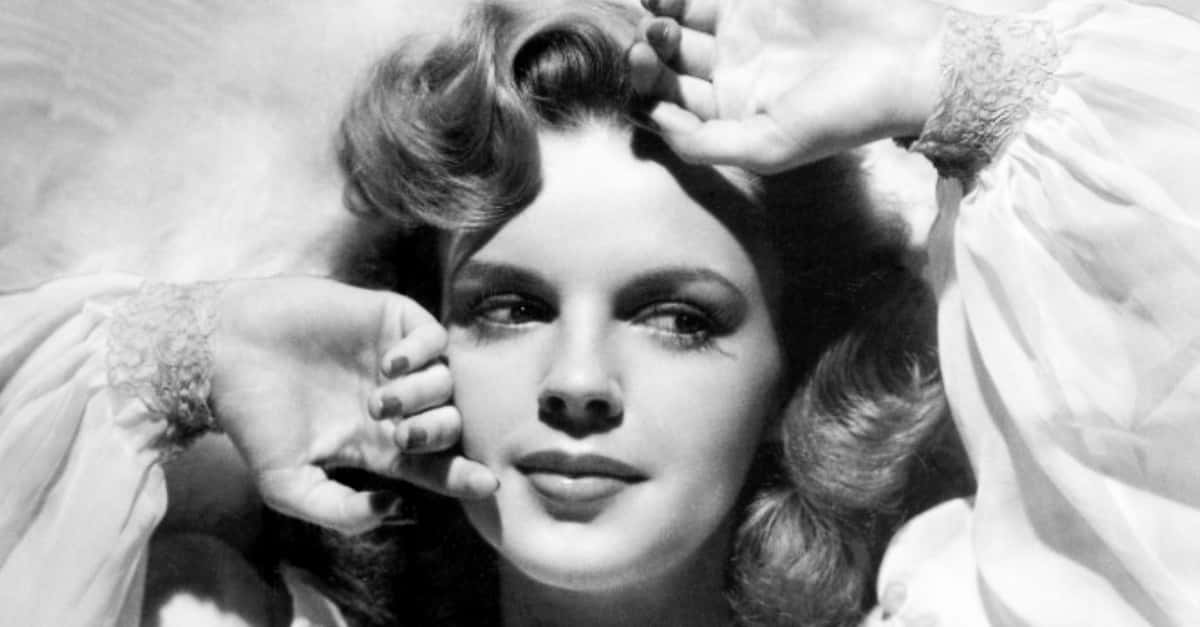Before I was even old enough to be cognizant of what I was spilling my food on, my grandmother gave me—well, really, my parents—a souvenir she’d acquired on one of her many travels. No, it was not a Dutch clog or a lucha libre mask from Mexico, that wasn’t her type of travel. It was a plasticized souvenir photo placemat from the West Edmonton Mall—that was her type of travel. On the back was a cartoon map of Canada, and while it did certainly prepare me well for elementary school geography class, it was the photo on the front that inspired my very first life goal.
It was a feast for the eyes: a replica of the Santa Maria floating in the water, flanked by two levels of the best chain stores that Canada had to offer. Text overlay boasted that it was the world’s largest mall. The world’s largest? In little ol’ Canada? I instantly knew what I wanted to do with my life: visit West Edmonton Mall.
The Dream Of The Mall
Spoiler alert: I never made it to the mall. Am I now, some 30 years later, a miserable and unfulfilled adult? Well yes, but for myriad other reasons. I know that it will never live up to its image in my mind. I also know that many Edmonton residents must have a fraught relationship with the behemoth. It’s a magnet for tourists, but not necessarily what you want to be known for as a local. Imagine having to trek across a 350,000 square meter mall just to return a shirt? Pass.
Back then, before internet shopping and the “retail apocalypse,” even a regular mall was a mecca to a child of the suburbs. Our local mall was small and had seen better days. The mall in the next town over was much larger, with a dazzling array of shops and food court options that could turn an errand into an afternoon trip. But the West Edmonton Mall? Well, according to my grandmother, noted mall and tourist trap connoisseur, the West Edmonton Mall was a total destination. It had the world’s largest indoor amusement park. The largest indoor lake. The largest indoor waterpark. Mini-golf. The aforementioned massive replica of the Santa Maria. It had a motel with themed rooms, for heaven’s sake.
This type of all-encompassing space, one you could step foot into and be presented with not just hours of entertainment, but days of it, was mesmerizing. It’s somewhat ironic since my hometown of Montreal is often lauded for its “underground city.” It conjures up images of residents going from home to work to shops without stepping foot outdoors. But really, it’s just a series of interconnected malls. But the West Edmonton Mall was its own comprehensive space. You would lack for nothing there.
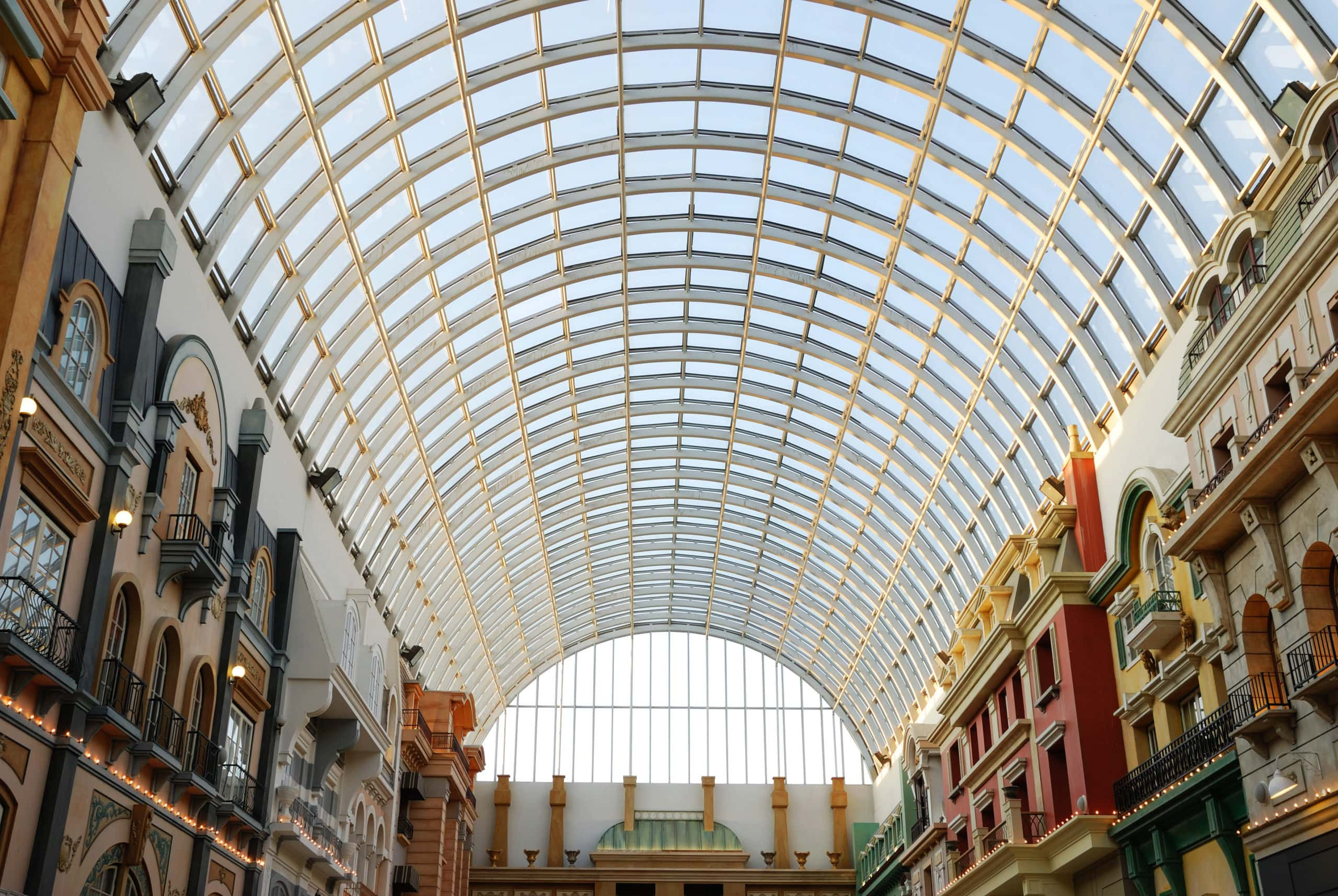 Shutterstock
Shutterstock
Living in the Golden Age
I wasn’t alone in feeling that way in that era. This was during the golden age of malls, which were inextricably tied to suburban life. At home, we may have been separated by our driveways and lawns, but the mall was the gathering place. It captured a special place in the imagination as a result. Popular culture frequently reflected this, from the Mall Madness board game to the numerous films and TV shows that centered around mall life. This was especially prevalent in the 80s and early 90s, when the aesthetic was all neon, fountains, and skylights.
Of course, the golden age of malls has long since passed. My disillusionment with mall life has long been on the same trajectory as their slow decline. But even during their lofty heights of existence, there was a dark side to malls. For many, they have long been a monument to mindless consumerism and the ennui of suburbia. Even back in 1978, George Romero and Dario Argento set their zombie film Dawn of the Dead in a mall. They used the location as part of the film’s commentary on modern consumer society.
The Dark Side of the Mall
Like any other product of shiny suburbia, West Edmonton Mall has its own unseemly, hidden elements. Galaxyland, the amusement park, is home to the Mindbender, the world’s largest indoor roller coaster. In 1986, the Mindbender claimed the lives of three people and injured 20 more in a truly horrific accident. It made international news, and was the result of flawed design and improper maintenance procedures. In 2005, a group of adults and older teens lured a 13-year-old girl from the mall and killed her. One of the teens, who went by Buffy, suffered from substance misuse issues was said to essentially live in the mall. In 2011, a controversy arose when video footage showed security staff assaulting a woman they’d arrested for trespassing. And in 2015, a terrorist group released a video calling for attacks on Western shopping centers. They specifically named West Edmonton Mall as a target.
Despite this dark history, the West Edmonton Mall, at least for now, continues to flourish in some senses. Renovations and additions are constantly underway, despite the loss of anchor stores. One would imagine the “golden age” of anything commercial to be driven by massive corporations. While there was homogeneity in the Canadian mall scene when I was growing up, many of the smaller stores weren’t chains. For every HMV there might be a nebulously-named music store run by a local. For every Reitman’s, a women’s clothing boutique staffed by girls from the nearby high school. That type of variety was another thing that attracted me, and my grandmother, and likely others to the mall as an attraction. Today, every mall has the same lineup of chain stores.
Living in the Decline
In 2004, the West Edmonton Mall lost its title of “world’s largest mall” to Dubai. It’s a fantastic metaphor for the decline of the Western mall. It’s also a direct blow to Canada’s unwavering inferiority complex. Visiting indoor malls now feels taxing, bleak, or a combination of both. My life dream of visiting West Edmonton Mall remains unfulfilled—and not particularly high on the list of priorities. But I can’t lie: looking at pictures of the Santa Maria, floating in its lagoon surrounded by stores still lights a little fuse in my brain. I’m zooming into the photo, looking at the stores and the people milling around. It’s just like I did when I was little. Picking up the placemat and squinting at the detail to see what I can make out, and imagining what it would be like to be there.

